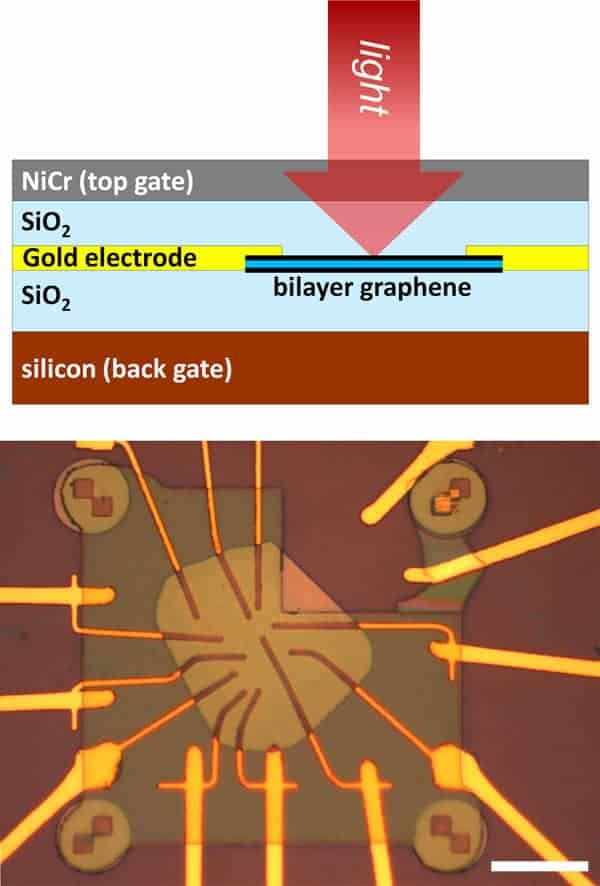
A new graphene-based bolometer has been created by Dmitri Efetov and colleagues at the Massachusetts Institute of Technology. A bolometer measures the power of incident electromagnetic radiation and the team says that the new device is much faster and more sensitive than current bolometers – and does not need to be chilled to ultracold temperatures. It could have a wide variety of applications, including heat monitoring in buildings, astronomical observations and quantum information processing.
Conventional bolometers measure the power of incident electromagnetic radiation by measuring temperature changes in a metal sheet as it absorbs energy from the radiation. This setup has important limitations; no matter what metal is used, the bolometer will have a limited sensitivity, and will only be able to detect radiation with wavelengths within certain ranges. Furthermore, in order to achieve a reasonable signal-to-noise ratio, the metal sheet must be connected to a thermal reservoir that is maintained at ultralow temperatures – which makes the devices expensive to run.
Efetov’s team say they have solved these problems by replacing the metal with a single sheet of graphene – a material just one atom thick that contains a 2D gas of electrons. “Unlike a traditional bolometer, the heated body here is simply the electron gas, which has a very low heat capacity, meaning that even a small energy input due to absorbed photons causes a large temperature swing,” Efetov explains. When the graphene is coupled to a photonic nanocavity, the signal is amplified further, allowing for precise measurements of photon energy.
Rapid heating
Graphene-based bolometers offer a host of advantages over their metal counterparts, say the researchers. While metals take a long time to heat up, electron gases can heat up in just picoseconds, allowing the bolometer to operate at ultrafast speeds. Electron gases are also sensitive to photons of all wavelengths, giving the device a much greater bandwidth than previous bolometers. Finally, any incoming radiation will have a far greater influence over the electron gas than the surrounding temperature, meaning the graphene does not need to be kept at ultralow temperatures to minimize noise.

Electrons feel the heat in new graphene photodetector
Efetov, who is now at the Institute of Photonic Sciences in Barcelona, is confident that the device will be used for a broad range of applications in the near future. The bolometer’s ability for room-temperature operation means it could be used in thermal sensors for buildings, monitoring heat escaping from poorly insulated houses. In astronomy, it could fill in missing wavelength bands like the terahertz gap, allowing for observations of previously unobtainable signals. The device’s ability to sense tiny changes in radiation could allow for new kinds of quantum sensing and information processing devices. “We believe that our work opens the door to new types of efficient bolometers based on low-dimensional materials,” Efetov says.
The new bolometer is described in Nature Nanotechnology.



